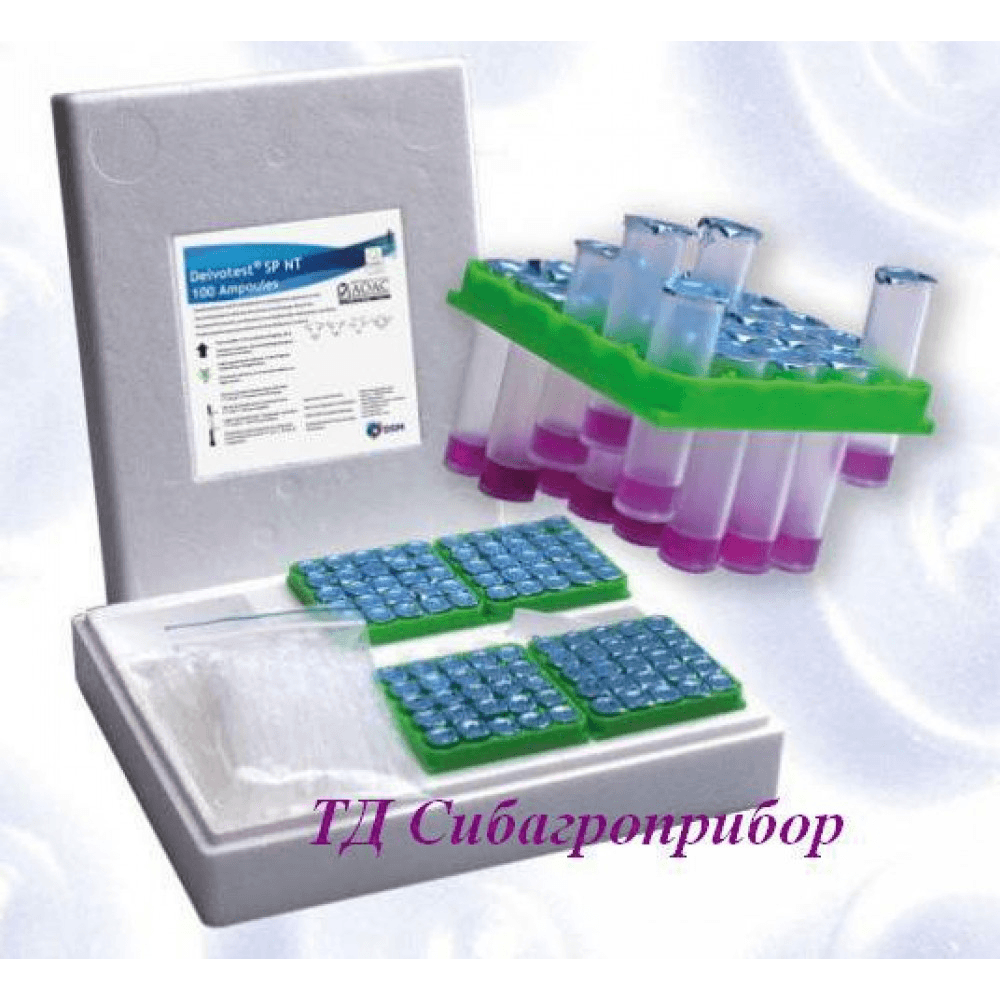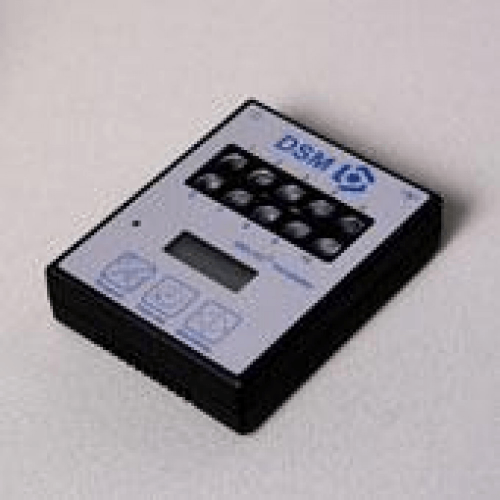Description
Delvotest are standard tests for the determination of residual amounts of antibiotics and sulfa substances in milk.
Difference of Delvotest: simplicity of performance of analyzes and ease of definition of their results.
Long shelf life.
Ampoule test equipment
For the incubation holding of ampoules, a dry heater has been developed, powered by an AC voltage of 220 V (there are modifications of a dry heater powered by 12 V DC, for use in a tank truck when transporting milk), which has a number of serious operational advantages over standard water baths. Temperature control in the heating cavity of the ampoules is carried out by an electric thermometer with a display. Time control is carried out by an electronic timer. The ampoule test kit also includes a syringe and disposable 0.1 ml sampling pipettes.
The kit includes :
4 blocks of ampoules (for the MINI modification – 1 block), 25 pieces each, containing a solid violet agar medium, including a standardized amount of spores of Bacilus Steagotermophilus vag. Salidolactis C953;
syringe dispenser for milk sampling;
100 pieces of disposable pipettes (25 for MINI) for milk sampling;
Instructions for use
Cut off the required number of ampoules with scissors.
Open the ampoules by poking a hole in the aluminum foil with a syringe. Label the ampoules with milk sample numbers.
Attach a new disposable pipette to the syringe. Squeeze the plunger completely, dip the pipette tip into the sample.
Lower the syringe into the appropriate test tube, squeeze the plunger of the syringe. Use a new disposable pipette for each new milk sample.
Check the temperature of the incubator (64’C, error +/- 0.5°C). Lower the ampoules into the incubator. Set the timer to 3 hours or the time to check.
Decipher the color in the bottom 2/3 of the solid agar medium ampoule after the inhibition time has elapsed.
The agar medium contains a standardized amount of spores of the microorganism Bacilus Steagotermophilus vag. Calidolactis C953 This bacterium was chosen because of its high sensitivity to most antibiotics, and especially to penicillin and other beta-lactam substances.
When the temperature rises to 64 ° C, spores multiply rapidly, which leads to the formation of acid. When the amount of this acid becomes sufficient, the color of the indicator medium changes from violet to yellow.
If the milk sample contains inhibitory substances, such as antibiotic residues, they will diffuse into the agar medium and, when their concentration is high enough, they will delay the process of bacterial growth and, consequently, the formation of acid. In this case, the color of the test will not change to yellow: it will remain purple if the inhibitor concentration is above the detection limit for that inhibitor, and it will be between purple and yellow if the inhibitor concentration is close to the detection limit.
The behavior of microorganisms, which includes reproduction, development and acid formation, depends on the holding temperature. Both too high and too low temperatures cause these processes to slow down, which leads to an increase in the duration of the analysis. Deviations from the optimum temperature can also affect the sensitivity of the test to certain substances.
Evaluation of test results
In the absence of inhibitory substances in milk (and in the control sample), the contents of the ampoule will have a yellow color. In the presence of inhibitory substances in milk, the contents of the ampoule will have a purple color. The violet ring on the surface of the medium in the ampoule is not counted.
negative Sensitivity limit Positive
The table shows the level of detection of antibiotics (U/g, or µg/g) in mixed, raw cow’s milk using the Delvotest® SP-NT method (Delvotest® SP-NT)
Negative Detection Limit Positive
Positive: milk is not recyclable
Negative: milk can be recycled
Studies of other types of product samples
“DELVOTEST” can be used to test other (liquid) products for the presence of antibiotics.
Milk from other animal species (sheep, goat, buffalo), cream, yogurt, chocolate milk, creams, etc., as well as urine, raw meat juice, blood serum, may be tested if there are interfering factors such as fat, acid or dyes will be neutralized.
Limits of detection
The table shows the level of antibiotic detection (U/g, or µg/g) in mixed, raw cow’s milk using the Delvotest® SP-NT method (Delvotest® SP-NT).
Antibiotics and inhibitory substances
Antibiotic detection level after 3 hours (×10-3) µg/g
Antibiotics and inhibitory substances
Antibiotic detection level after 3 hours (×10-3) µg/g
Gr. ß lactam
Microlides
penicillin 2-3
tylosin 50
Ampenicillin 6-7
spiramycin 800-1000
amoxicillin 3-5
erythromycin 200
ceftifur 50-100
Cephapyrin 6-8
Cloxacillin 20-30
Dicloxacillin 10-20
Other
oxacillin 10
Trimethoprim 200-300
range 1-2.5
sulfamides
sulfadiazine 100-150
Aminoglycocides
sulfamethazine 100-250
Gentamicin 200
Neomycin 300-600
tetracycline
tetracycline 800
Oxytetracy-Kline 800
The above figures in the table are based on yellow/violet to violet readings and are indicative.
A positive test result is recommended to be further confirmed. Factors affecting the test result are incubation time, temperature, storage conditions.



